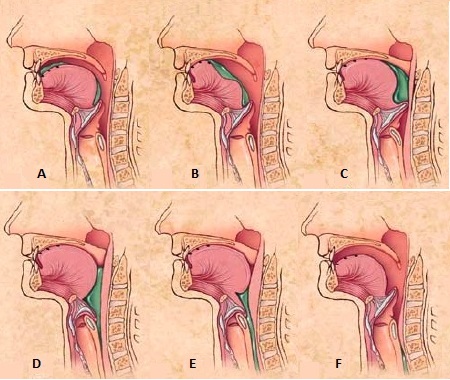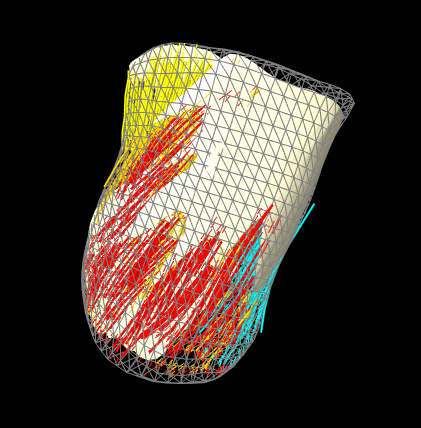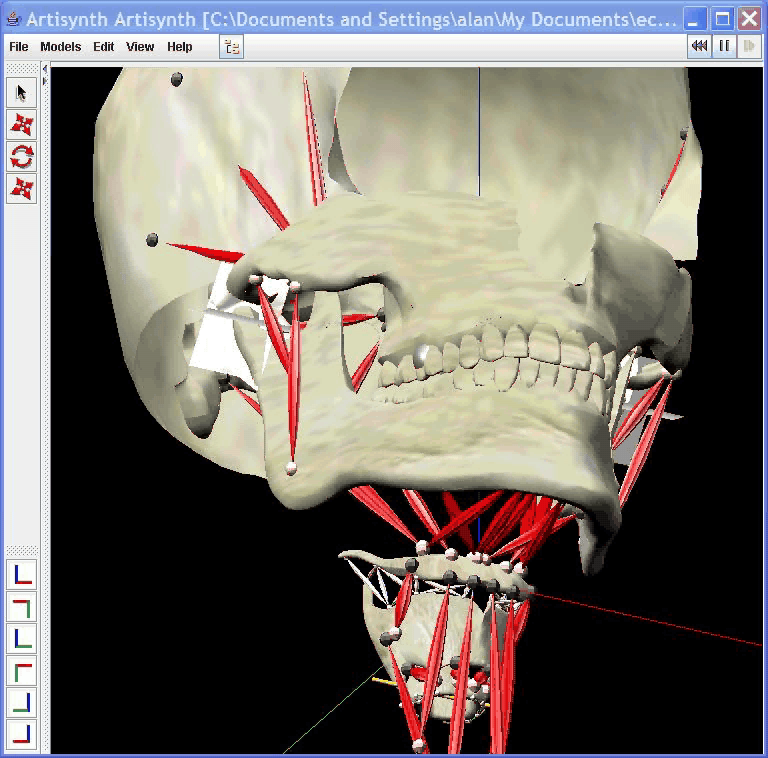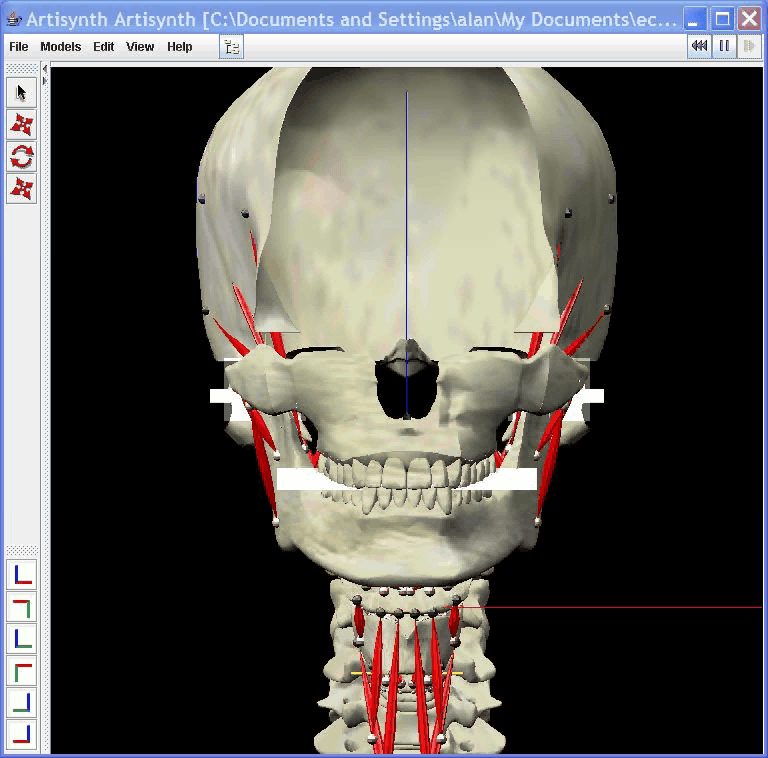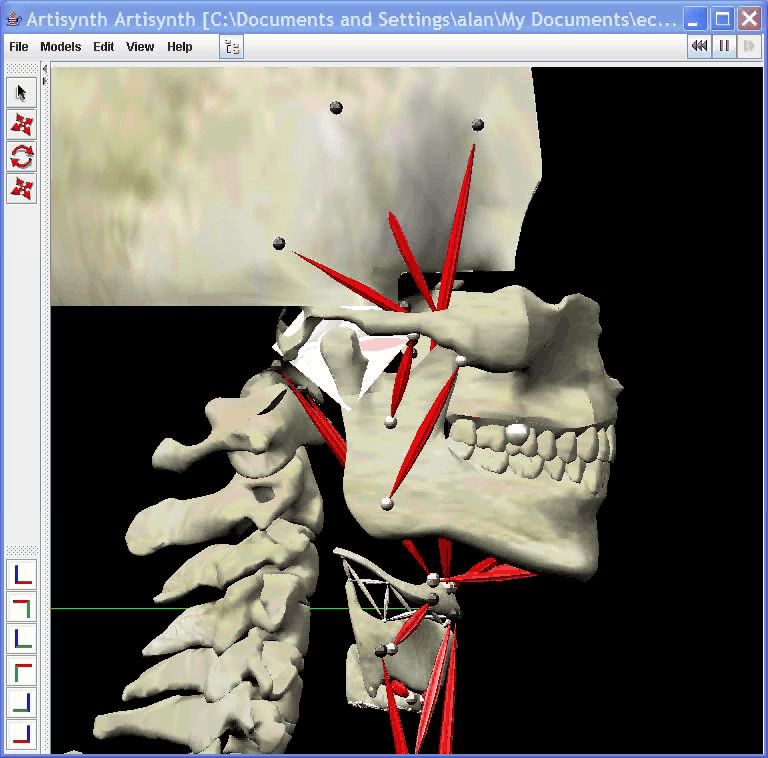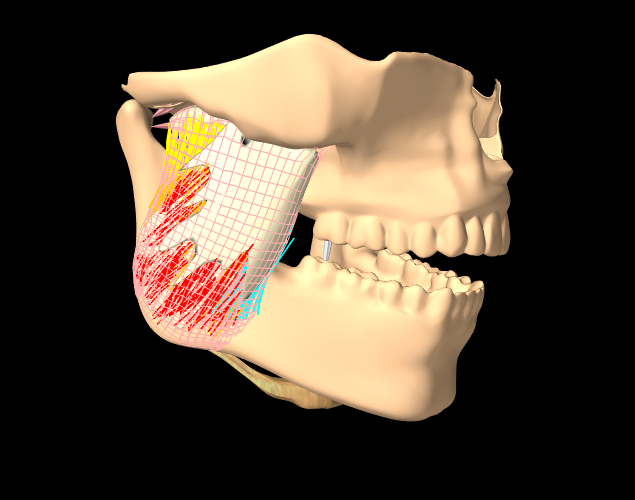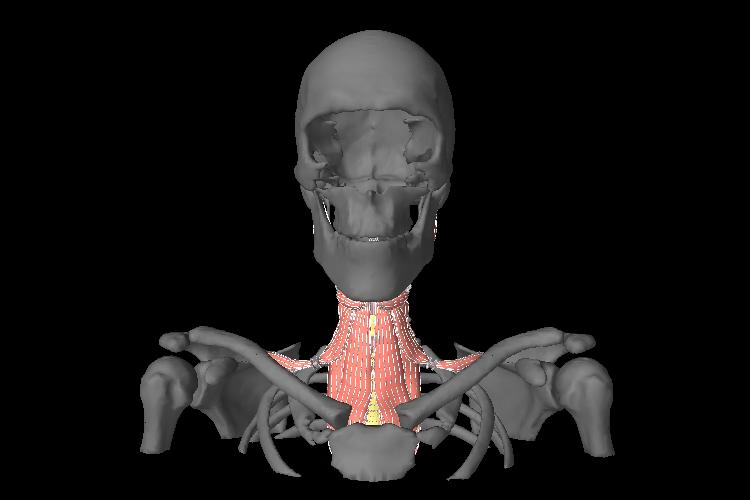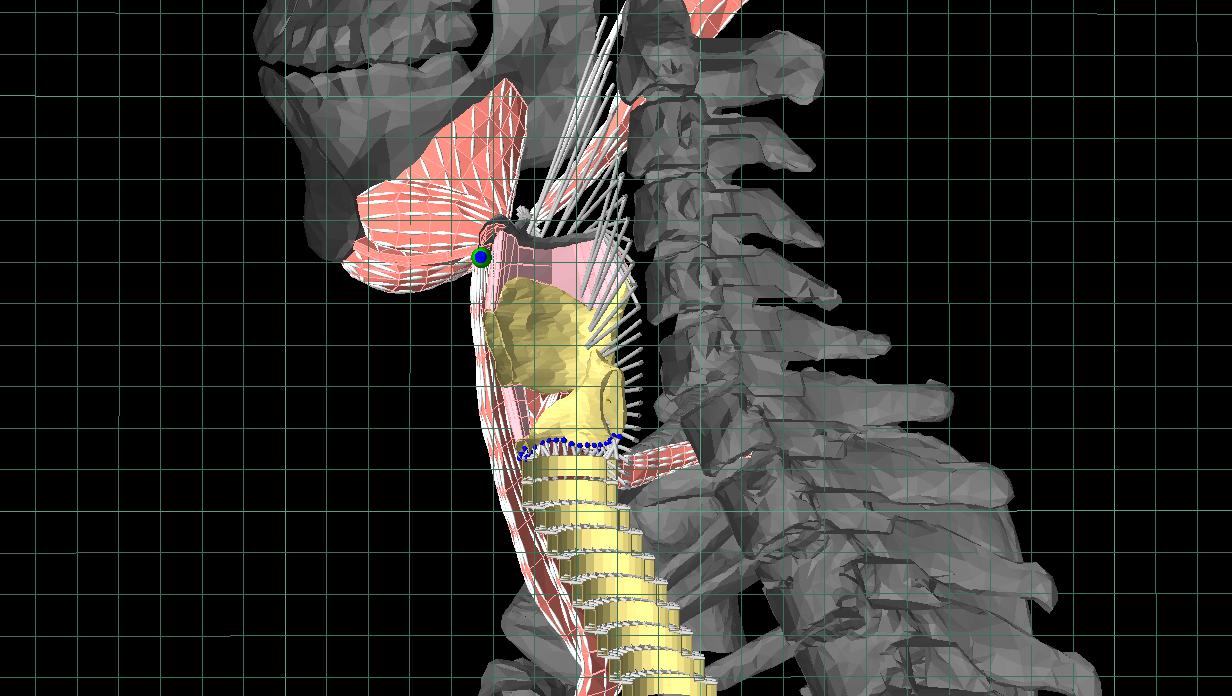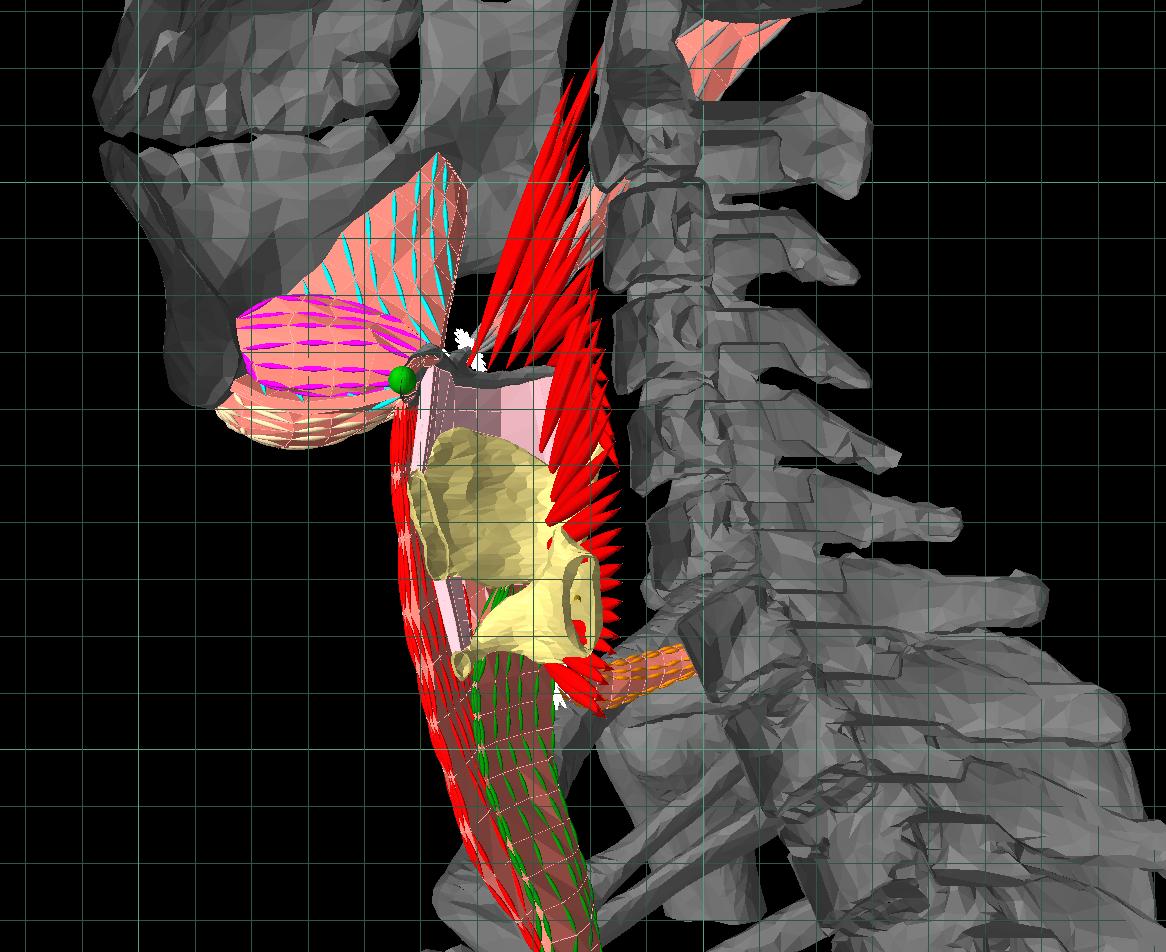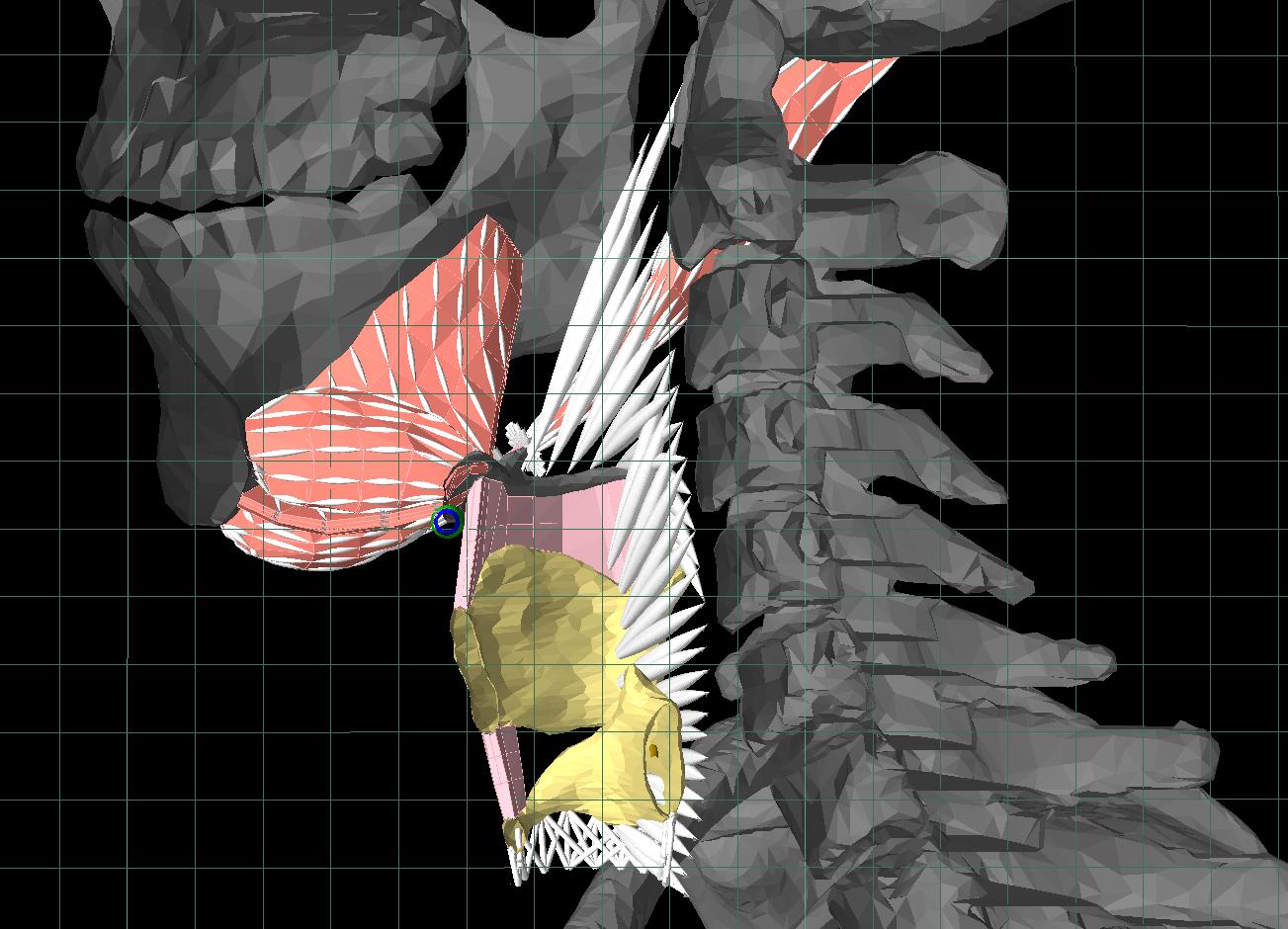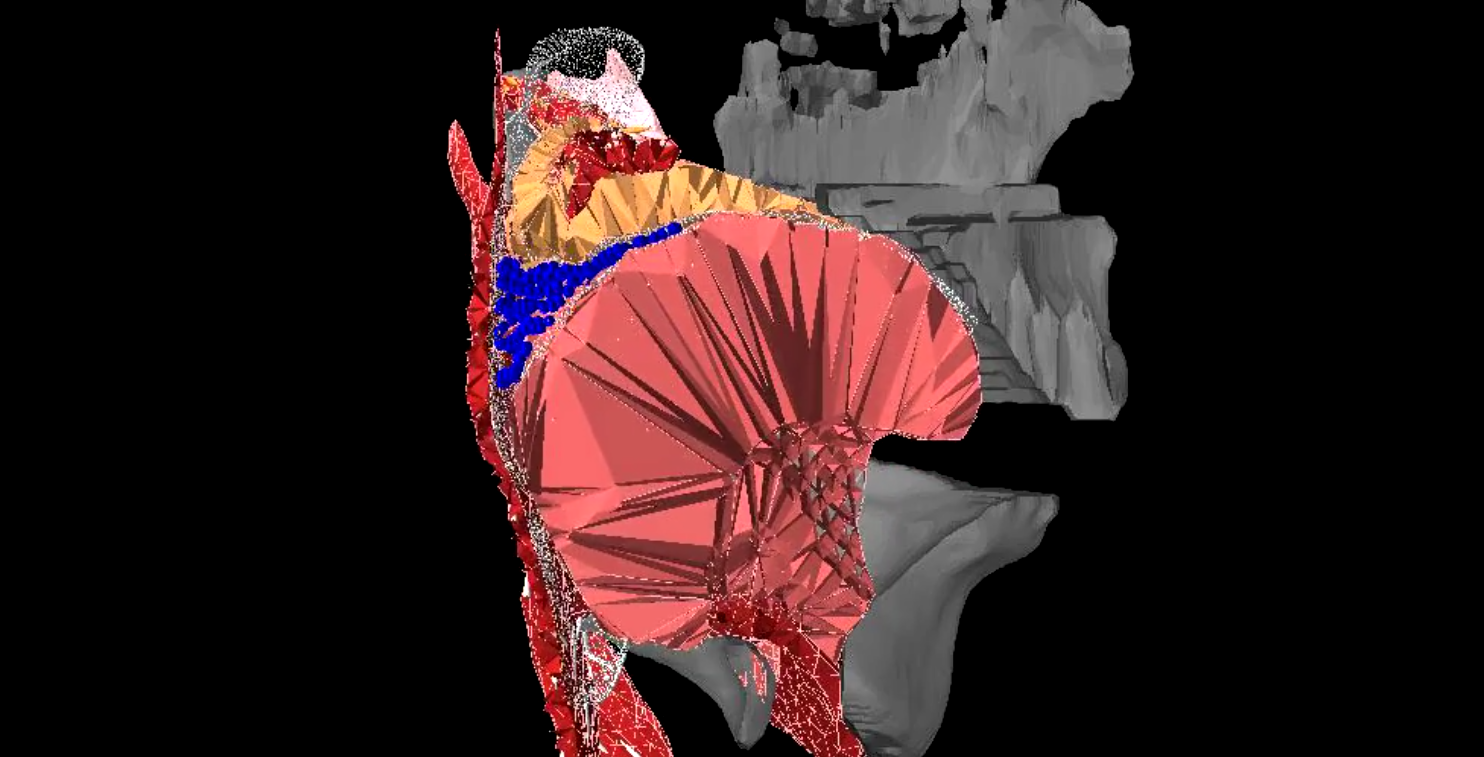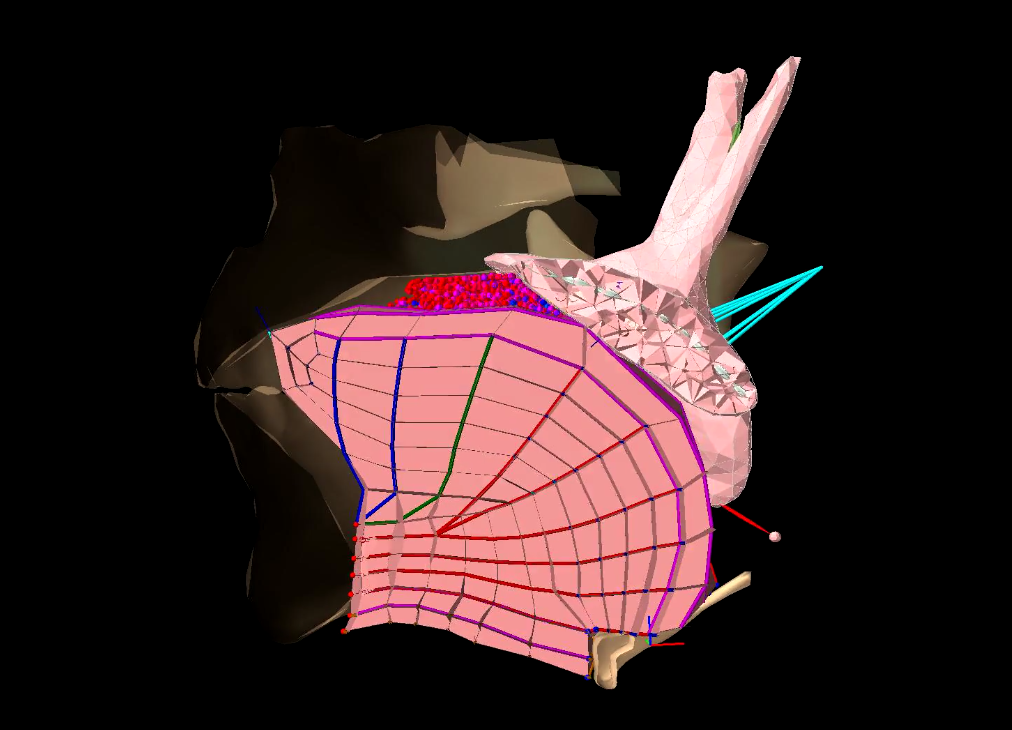|
|
||
| Menu | OPAL / MasticationAmpSwallowingModels | |
|
OPAL Home About People International Collaborators
Opportunities
Events
Related Links
|
Mastication and SwallowingMastication includes the preparation and positioning of food in the mouth, crushing and grinding of the bolus, and various other intra-oral events leading to the definitive swallowing sequence. The lips, cheeks, tongue, jaw, teeth, palate, pharynx and larynx all participate in a highly-coordinated manner, and the respective muscles are arranged in a complex spatial framework linking the mandible to the hyo-laryngeal suspensory apparatus. Not surprisingly, the system is highly susceptible to changes in its structural components, and to defective neural function. Masticatory dysfunction can occur after radical jaw resection and reconstruction, or with intra-articular anomalies; and difficulties in both mastication and swallowing can take place after stroke. Swallowing, also known scienti cally as deglutition, is a complex neuromuscular activity responsible for carrying ingested food (and saliva) from the mouth to the stomach. It occurs about 600 times every 24 hours which is about once a minute in awake subjects, irrespective of eating. Various medical complications may result in swallowing disorders, also known as dysphagia. Swallowing is divided into the oral, pharyngeal and esophageal phases. It involves the coordinated movement of the jaw, lips, tongue, hyoid bone, larynx and pharynx. The oropharyngeal phases of swallowing involve propelling the prepared bolus out of the oral cavity and into the pharynx, and then into the esophagus. The tongue, soft palate, laryngeal and pharyngeal muscles all play important roles in the correct delivery of the bolus to the esophagus. System ModelsThe musculoskeletal biomechanics of mastication and swallowing are hard to study in humans. Many structures are inaccessible, and the methods used to record movements, forces and muscle responses are often invasive. A limited number of parameters can be recorded simultaneously, and the small samples usually studied encourage investigators to link structure and function by association, and/or by retrospective analysis. For these reasons, modelling is being used with increasing frequency to understand cause and effect. Factors encouraging this trend include modern biomedical imaging, and current software which permits, for example, the finite-element analysis of tissue stress, strain and deformation, and the prediction of rigid-body motion. Simulation of mastication and swallowing is a major undertaking because these acts are so complex. Assembling the anatomical components needed to simulate the jaw, tongue, and oropharynx can be difficult; the many tissues involved require definition of their physical properties, and muscles have to be controlled in a coordinated way. Nevertheless, modelling an integrated system is an attractive goal because mastication and swallowing (and for that matter, speech and other upper airway functions) all share a common substrate. ProjectsOur overall aim is to study the musculoskeletal biomechanics of mastication and swallowing in health and disease. To date, we have successfully used rigid-body dynamics and the Artisynth platform to simulate the resting jaw, maximum jaw gape, and a swallow-like laryngeal elevation. Recently, we modified this model to generate a realistic chewing cycle. The current model includes plausible jaw and hyoid movements, and we plan to integrate this with functioning models of the tongue and pharynx. Successful simulation of normal mastication and swallowing will permit study of the disorders affecting these acts. We are also currently investigating some of the finer details of the masseter muscle during mastication using state-of-the-art finite element modelling. The masseter has a complex multipennate structure that enhances its ability to generate strong isometric forces. Inside the muscle are internal tendon sheets that transmit those forces to the attached bones. There is a strong interplay between the pennated fibres and the tendons that allow us to chew with such strong forces. By creating a highly detailed finite element model that includes both the complex muscle architecture and the internal tendon sheets, we are able to study the complex interactions. Other current projects underway include tissue-segmentation from cone-beam CT and MR images, digitizing dental casts, developing and registering mesh-models of the jaw and related structures, controlling muscle activation for our forward- and inverse-dynamic models, and colliding complex components like the teeth. We are experimenting with particle-based fluid simulation techniques in order to track and visualize the bolus as it moves through the oral cavity and pharynx. PersonnelKey UBC personnel in the project are Sidney Fels, Antonio Sanchez, and Andrew Ho (Electrical and Computer Engineering) John Lloyd (Computer Science) and Alan Hannam (Oral Health Sciences). Key collaborators include Ian Stavness (UBC alumnus, University of Saskatchewan), Arthur Miller and Don Curtis at the University of California in San Francisco (segmental mandibular defects and dysphagia), Christie Ludlow at the National Institutes of Health (laryngeal modelling and dysphagia), Bonnie Martin-Harris (Medical University of South Carolina), Bill Pearson (Georgia Regents University), Jana Rieger (Institute for Reconstructive Sciences in Medicine), Jeffrey Palmer at Johns Hopkins (submandibular biomechanics in chewing and swallowing), and Mark Nicosia at Widener University (food bolus). Members of the OPAL team collaborate on other aspects of the project. For a complete list of collaborators, please visit the People page. Relevant PublicationsHo, Andrew Kenneth, Tsou, Ling, Green, Sheldon and Fels, Sidney (2014) A 3D swallowing simulation using smoothed particle hydrodynamics.. . (BibTeX) Alan Hannam, Ian Stavness, John E. Lloyd and Sidney S. Fels (2008) A Dynamic Model of Jaw and Hyoid Biomechanics during Chewing.. . (BibTeX) Sidney S. Fels, John E. Lloyd, Ian Stavness, Florian Vogt, Alan Hannam and Eric Vatikiotis-Bateson (2007) ArtiSynth: A 3D biomechanical simulation toolkit for modeling anatomical structures.. . (URL) (BibTeX) Ian Stavness, Alan G. Hannam, John E. Lloyd and Sidney Fels (2006) An Integrated, Dynamic Jaw and Laryngeal Model Constructed From CT Data.. . (URL) (BibTeX) Chewing Videos
Larynx Videos
Bolus Videos
Links |
|
| View Edit Attributes History Attach Print Search Page last modified on March 06, 2014, at 11:15 AM | ||
